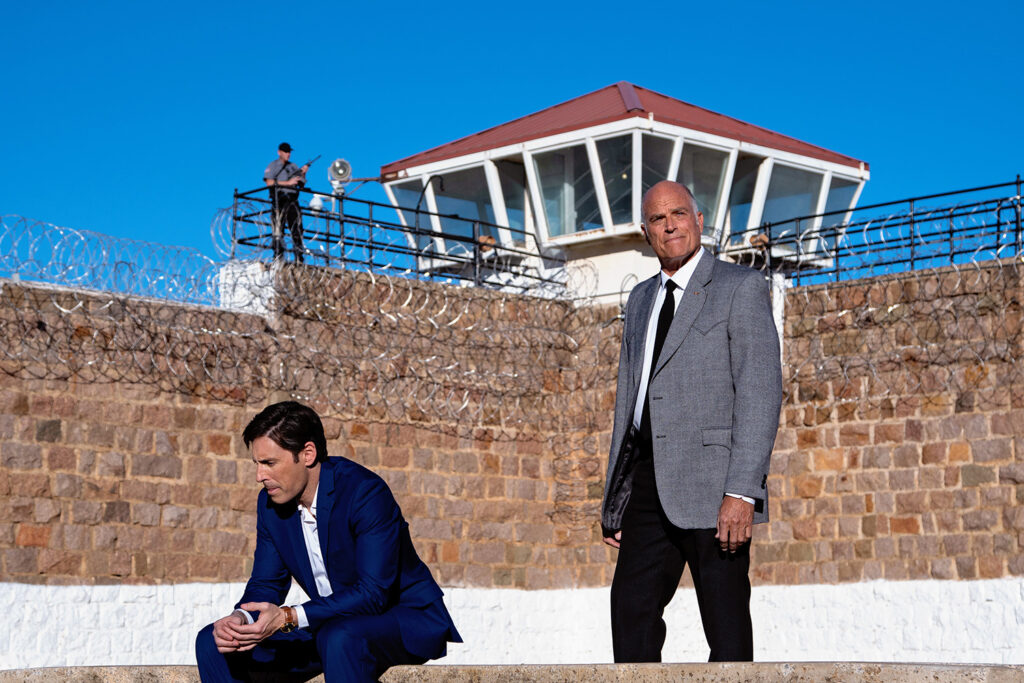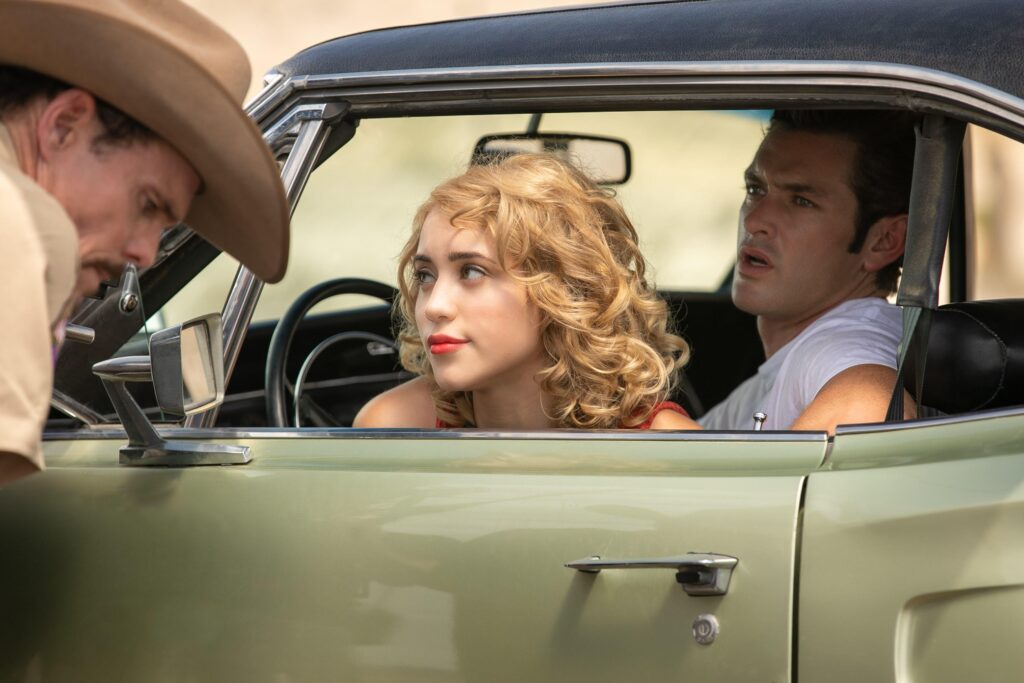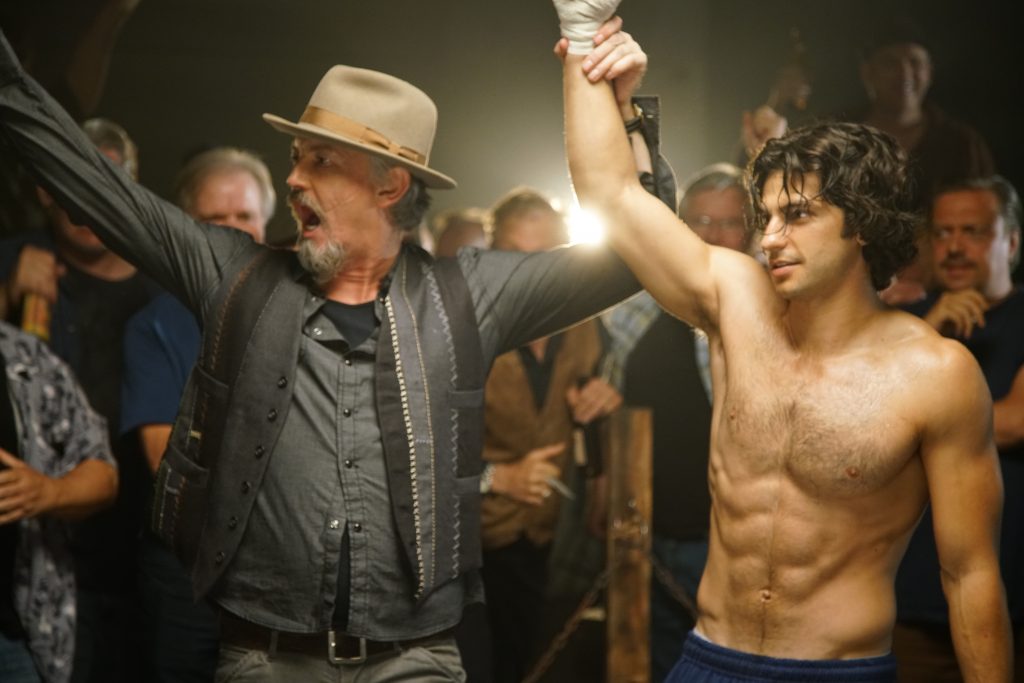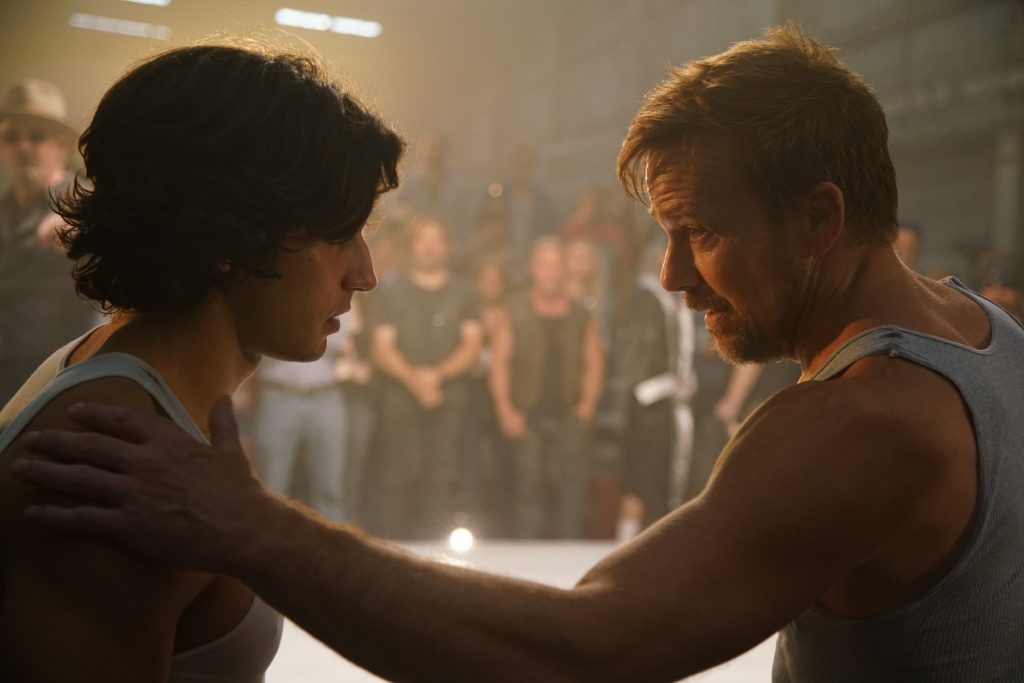April 23, 2023
by Carla Hay

Directed by Chuck Konzelman and Cary Solomon
Culture Representation: Taking place in Oklahoma, the dramatic film “Nefarious” features a predominantly white group of people (with a few black people) representing the working-class and middle-class.
Culture Clash: A psychiatrist is tasked with evaluating the mental health of a death row inmate, who claims to be possessed by a devil named Nefarious and who is about to be executed within 12 hours.
Culture Audience: “Nefarious” will appeal primarily to people who think that everyone should have extremely conservative lifestyles and values, because that type of propaganda is what is being pushed in this boring movie with a “holier than thou” attitude.

“Nefarious” has been inaccurately described as a horror movie. It’s a poorly made psychological drama about a death row inmate, with no real scares and too much over-acting. As this dull movie drones on, it becomes preachy propaganda for right-wing beliefs. “Nefarious” has no nuance and leaves no room for tolerance of other points of view, because this rigidly judgmental tripe is just one big toxic lecture saying that anyone who doesn’t have a conservative mindset needs to be condemned.
Written and directed by Chuck Konzelman and Cary Solomon, “Nefarious” is inspired by Steve Deace’s 2016 novel “A Nefarious Plot.” The “Nefarious” movie, just like the book that inspired it, is a thinly veiled collection of politically conservative and paranoid rants about demons threatening to tear apart American society. The movie wants to put forth the concept that atheists are among the chief culprits of this destruction and are more likely to “do the work of the devil.”
One such atheist is Dr. James Martin (played by Jordan Belfi), a psychiatrist who has arrived at an unnamed maximum security prison in an unnamed city in Oklahoma. James is at the prison because he has been appointed the psychiatrist who will evaluate the mental health of prison inmate Edward Wayne Brady (played by Sean Patrick Flanery), who is on death row for being a serial murderer. On the day that James and Edward meet each other, Edward is scheduled to be executed by electrocution later that evening.
James got this assignment on short notice because Edward’s regular psychiatrist Dr. Alan Fischer (played by Mark De Alessandro) fell from his high-rise office building the night before. This fall is shown in the movie’s opening scene, which suggests that supernatural forces were involved. The official cause of death is suicide. But was it suicide or something else?
Before meeting Edward at the prison, James is warned by prison warden Tom Moss (played by Tom Ohmer) that Edward is a “master manipulator” who will try to get James to diagnose Edward as mentally unfit to be executed. James tells the warden that Dr. Fischer was “somewhat of a mentor” to James, who says that he doesn’t get easily fooled or manipulated. James also says that he will evaluate Edward fairly and objectively. James does not give any indication of what his personal beliefs are about death penalty executions.
The hammy acting in “Nefarious” begins and doesn’t let up during the long and tedious scenes showing the moronic conversations between Edward and James. Much of the movie looks like a very unimaginative and soulless stage play. Edward immediately puts on a not-very-believable show, by saying that he is possessed by a demon who calls himself Nefarious. When Edward speaks in his “real” voice, he stutters and acts like an emotionally damaged person.
But when Nefarious speaks, Nefarious is cocky, taunting and vulgar to James. Nefarious is also the one who takes credit for the murders that Edward was convicted of and suspected of committing. You can almost do a countdown to when “Nefarious-possessed” Edward violently lunges during the interview and has to be held back by prison guards. The over-the-top way that Flanery acts when switching back and forth between these two personalities is supposed to be scary, but it’s actually just cringeworthy.
James becomes increasingly unsettled when it becomes obvious that Edward knows a lot about James’ personal life. Edward (as Nefarious) also says that by the end of their evaluation session, it will be proven that James committed three murders. It sounds intriguing, but “Nefarious” just uses this statement as a gimmick to preach about certain controversial medical procedures. In case viewers still haven’t figured out that “Nefarious” is just a right-wing diatribe disguised as a crime drama, there’s a laughably bad scene toward the end of the movie where conservative media personality Glenn Beck (playing a version of himself) interviews James on a talk show.
The very last scene is this awful movie is especially heinous, since it portrays a homeless African American woman (played by Sheran Godspeed Keyton) as being a vessel for the devil, for no reason except that she’s a homeless African American woman. Regardless of anyone’s political or religious beliefs, anyone who wants to see a well-made and suspenseful thriller is better off not watching “Nefarious.” It’s a very delusional and trashy film that advocates for intolerant and destructive bigotry in a world where various lifestyles and cultures are facts of life that cannot be erased.
Soli Deo Gloria Releasing released “Nefarious” in U.S. cinemas on Aprl 14, 2023.




